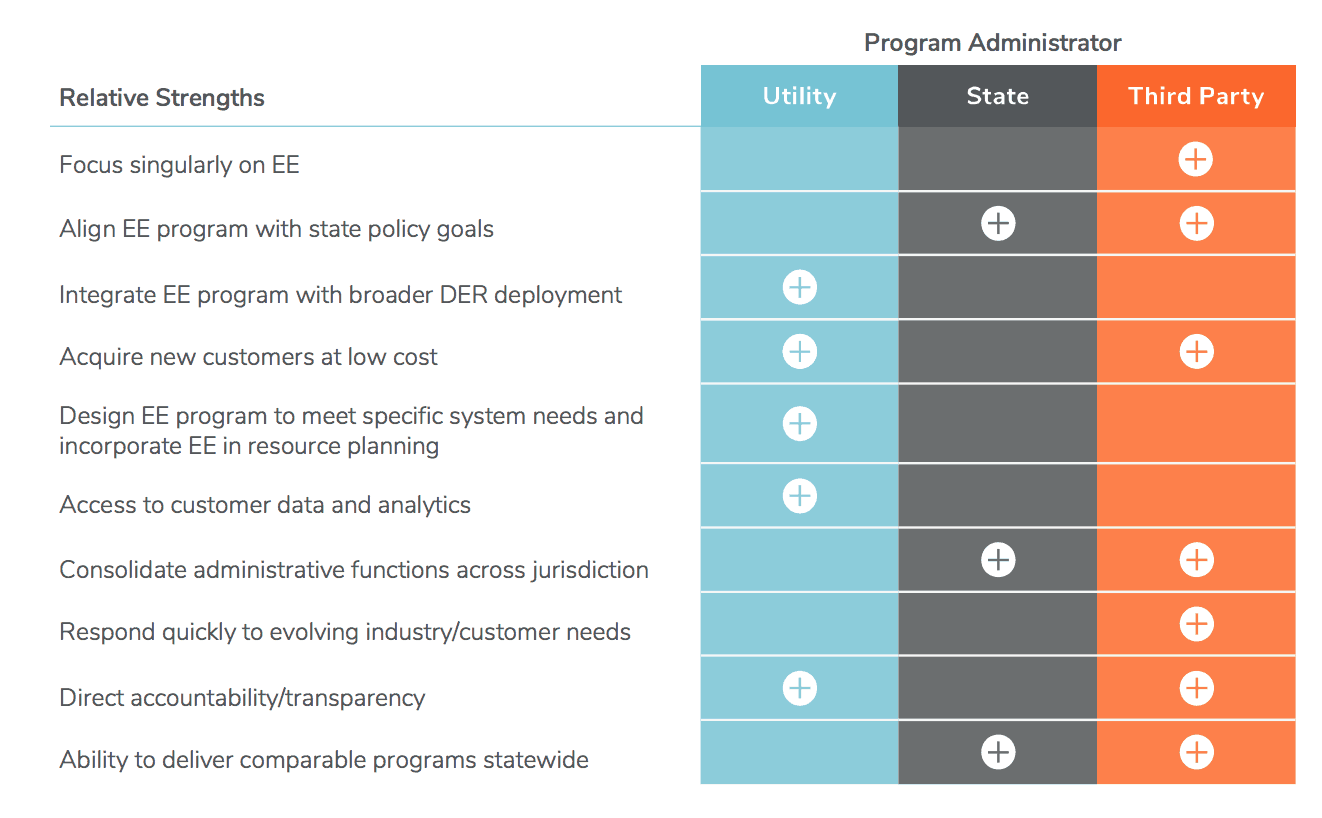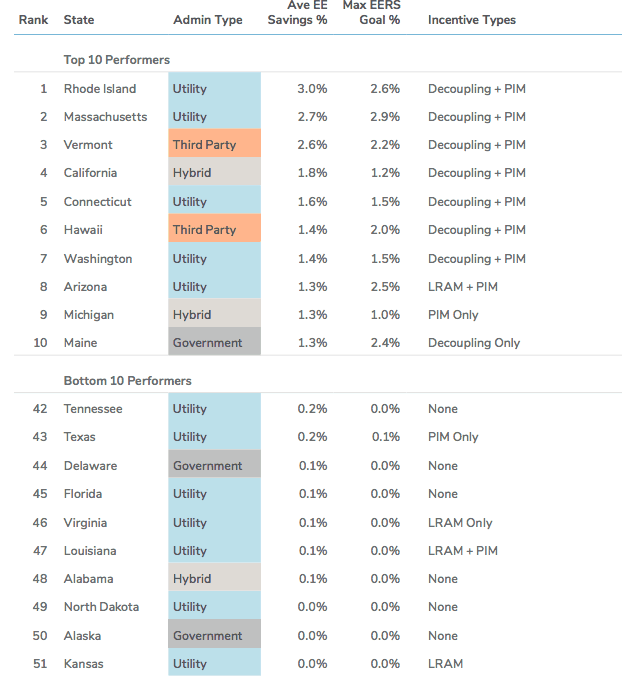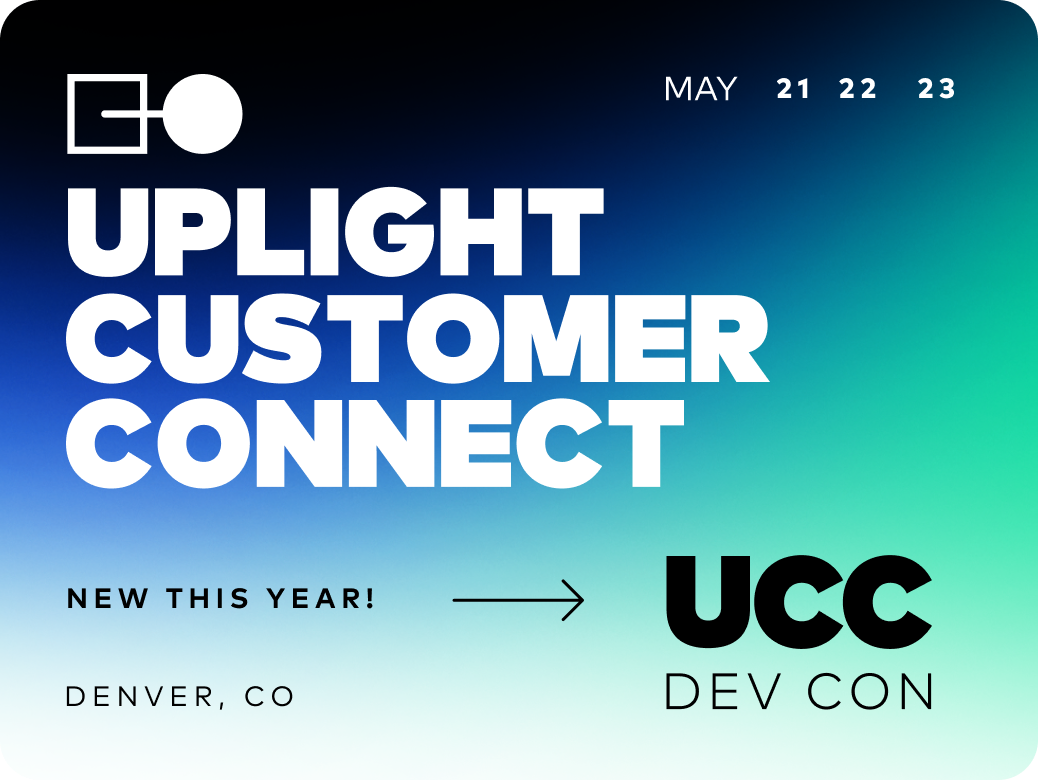The Brattle Group just released its final report on a study commissioned by Uplight to explore what makes demand side management (DSM) programs successful. In this study, Brattle researchers examined programs from all 50 states and the District of Columbia from 2012-2017 to perform a regression analysis across a range of variables to determine what factors drive energy savings.
Each administrator model (utility, state, third-party, and hybrid) for DSM programs utilized across the country shows strengths and weaknesses in their execution (Figure 1). For example, utility-led programs, which are the norm in 35 states, can integrate programs such as energy efficiency (EE), demand response, and grid modernization, leverage their customer pool for higher acquisition rates at lower cost, design EE programs with an understanding of specific system needs, utilize data and analytics for greater personalization, and are held accountable by oversight institutions. The main weakness in utility-led programs highlighted by Brattle is the potential for misaligned incentives, which can be mitigated by incentive programs – both those that remove disincentives and those that incentivize or reward progress toward EE goals.
Figure 1. Relative Strengths of Different Administrator Models
(Source: Brattle Report, Table 1)

Figure 2. Relative Weaknesses of Different Administrator Models
(Source: Brattle Report, Table 2)

The Brattle report shows that regardless of administrator model, utilities especially must be bought-in and serve a key role in realizing EE goals and all other stakeholders must be involved to ensure seamless coordination.
Brattle researchers performed a regression analysis to quantitatively explore what factors drive energy savings. None of the administrator model variables significantly impacted higher EE savings; instead variables such as full decoupling and performance incentive mechanisms (PIMs) led to higher EE savings. The regression analysis suggests that each jurisdiction must be thoughtful about DSM program design by understanding what incentive mechanisms are in place and in what regulatory environment these programs will operate. For example, utility-led DSM programs would optimize EE savings in New Jersey by leveraging the strengths of the utility-led program while mitigating against any weaknesses with decoupling.
What seems to matter most is the availability of full decoupling, performance incentive mechanisms, and having a state level energy efficiency goal. (Brattle Report)
Looking at the top and bottom 10 performers across the country also confirms the results of the regression analysis. The utilities in the top have incentive mechanisms like decoupling and PIMs in place often with EERS whereas the bottom performers generally do not.
Figure 3. Top and Bottom 10 Performing States by Average EE Savings
(Source: Brattle Report, Table 5)

This work suggests that administrative models for DSM programs must be crafted with care as the cost and time required in implementing a new model may impact program performance. In particular, quantitative analysis shows that incentive mechanisms can help drive greater energy savings.
Charting the Future
At Uplight we have seen first-hand the implementation of energy efficiency programs under different regulatory and incentive conditions, with some conditions being more conducive to EE than others. Integration of EE programs as portfolios allows efficiencies to be realized–such as lowered costs–and results in the ability to better serve customers by providing a more personalized experience. At Uplight, we’ll continue to work with regulators, thought leaders, utilities, and others in the energy ecosystem to ensure that the sustainable future we envision can be fully realized.
Download the report here.





